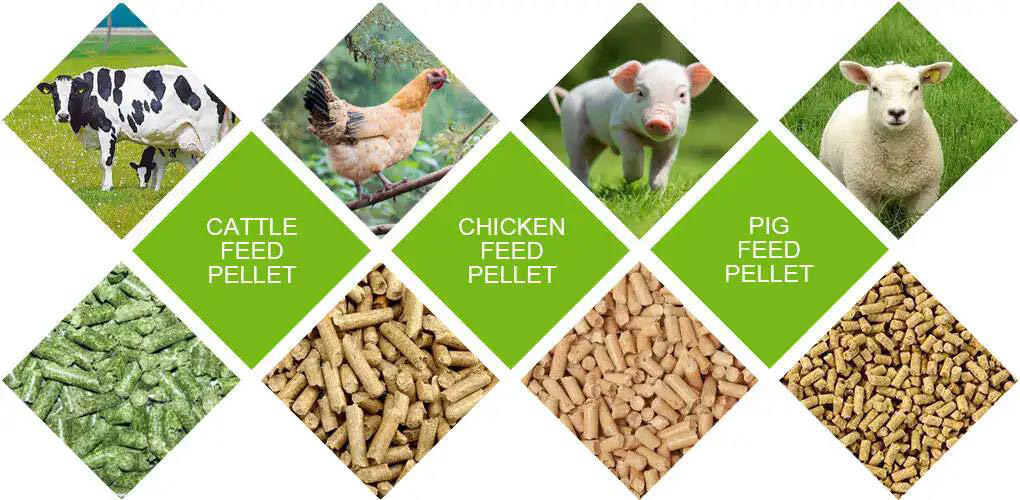feed production plant
A feed production plant is a facility or enterprise specialized in processing and manufacturing feed. It is responsible for processing ingredients such as grains, legumes, protein sources, vitamins, and minerals through processes like mixing, grinding, and pelleting to produce feed suitable for consumption by livestock and poultry.
feed production plant Introduction
A feed production plant is a facility or enterprise specialized in processing and manufacturing feed. It is responsible for processing ingredients such as grains, legumes, protein sources, vitamins, and minerals through processes like mixing, grinding, and pelleting to produce feed suitable for consumption by livestock and poultry. These factories typically possess advanced equipment and technology to ensure the production of feed products that meet nutritional requirements and quality standards.


Characteristics of feed production plant
High degree of specialization
These plants specialize in the processing and manufacturing of feed, equipped with professional equipment and technology.
Raw material processing capability
They have the ability to process ingredients such as grains, legumes, protein sources, vitamins, and minerals through mixing, grinding, and pelleting.
Quality control
They implement strict quality control measures to ensure the production of feed products that meet nutritional requirements and quality standards.
Technological advancement
They possess advanced production equipment and processing technology to enhance production efficiency and product quality.
Scientific formulation
They formulate feed scientifically according to the nutritional needs and growth stages of animals to ensure balanced nutrition.
Market orientation
They adjust production scale and product structure according to market demand to maintain competitiveness and market share.
Sound after-sales service
They provide timely and professional after-sales service to ensure customer satisfaction and product quality.


Process flow of feed production plant
Raw material procurement
Purchasing grains, legumes, protein sources, vitamins, and minerals from reliable suppliers.
Raw material storage
Storing the purchased raw materials in appropriate warehouses or storage facilities for subsequent processing.
Raw material preprocessing
Preprocessing the raw materials through cleaning, sorting, and grinding to enhance processing efficiency and product quality.
Ingredient mixing
Blending different types of raw materials according to specific formula proportions to ensure balanced nutrition in the feed.
Grinding and pelleting
Grinding and pelleting the mixed ingredients to facilitate better digestion and absorption by animals.
Drying and cooling
Drying and cooling the pelleted feed to improve stability and prolong shelf life.
Packaging and storage
Packaging the processed feed products and storing them in dry, ventilated, and moisture-proof warehouses for shipment or sale.


Advantages of feed production plant
Advanced production equipment and technology
Feed production plants are typically equipped with advanced production equipment and technology, allowing efficient processing of raw materials and ensuring product quality and nutritional balance.
Scientific formulation of nutrition
Feed production plants use scientific formulations based on animals’ nutritional needs and growth stages to provide comprehensive and balanced nutrition, promoting animal growth and health.
Quality control system
Feed production plants establish strict quality control systems to comprehensively monitor and test raw material procurement, production processes, and finished products, ensuring product safety and stability.
Economies of scale
Feed production plants usually operate at a large scale, enabling cost advantages and economies of scale, thus providing competitive product prices.
Comprehensive after-sales service
Feed production plants offer professional after-sales services, including technical support, post-sales consultations, and product follow-ups, providing customers with comprehensive support and services.
Application of feed production plant
Typically, the production of animal feed processing plant uses raw materials such as corn, soybeans, wheat, and other nutrients as the formula. Our small feed mill plants are specially used to produce feed for poultry, livestock, pigs, horses, cattle, sheep, chickens, ducks, goose and other animals.For different animals, with different growth cycles, (chicks, suckling pigs, calves, etc.), the feed pellet size required is different, but our feed production line only needs to replace ring molds with different apertures or use a pellet crumbler to reach the required size.

Parameter of feed production plant
| Model | Capacity | Main Motor Power | Feeder Motor Power | Conditioner Power | Dia. of Ring Die | Pellet Size |
| SZLH250 | 1-2T/H | 22KW | 0.75kw | 1.5kw | 250mm | 2-12mm |
| SZLH320 | 3-4T/H | 37KW | 1.5kw | 2.2kw | 320mm | 2-12mm |
| SZLH350 | 5-7T/H | 55KW | 1.5kw | 3kw | 350mm | 2-12mm |
| SZLH420 | 8-12T/H | 110KW | 1.5kw | 7.5kw | 420mm | 2-12mm |
| SZLH508 | 10-18T/H | 160KW | 2.2kw | 11kw | 508mm | 2-12mm |
| SZLH558 | 15-25T/H | 180KW | 2.2kw | 11kw | 558mm | 2-12mm |
| SZLH678 | 20-30T/H | 220KW | 2.2kw | 11kw | 678mm | 2-12mm |
| SZLH768 | 25-42T/H | 280KW | 2.2kw | 11kw | 768mm | 2-12mm |





